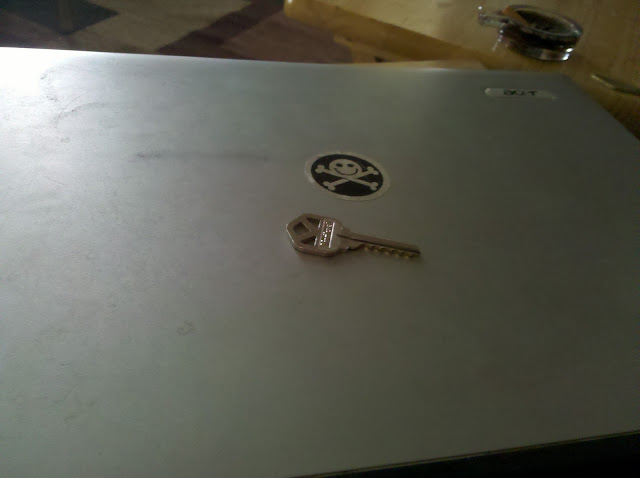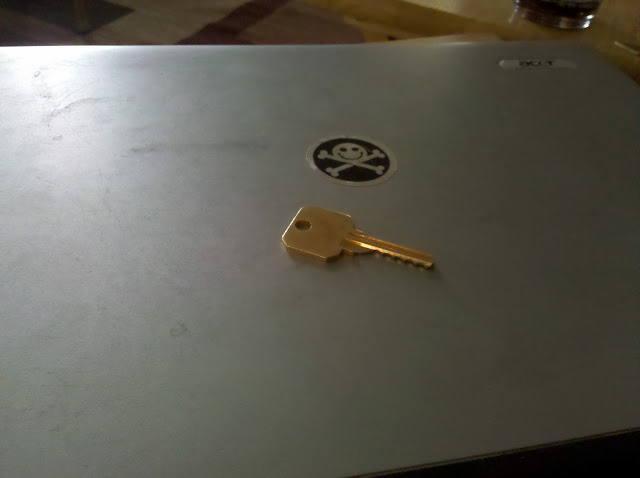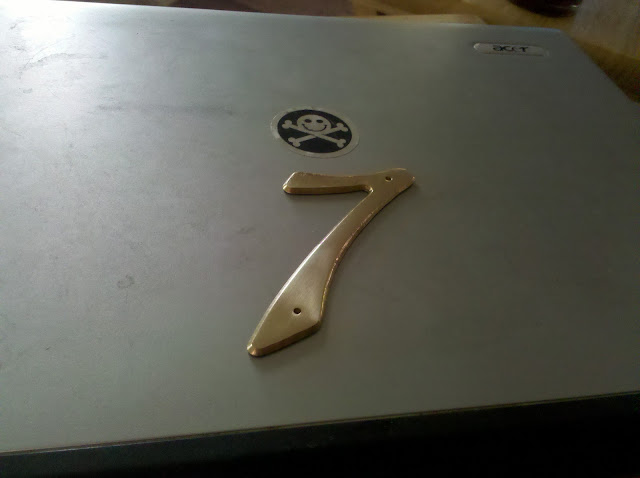Thats right girls, sX has another goodie up for grabs :D I really liked the idea EFF had with HTTPS Everywhere but was saddened when they said they will not be developing one for chrome due to some gayness, so i took the idea and ran with it. So today, with much pride, i bring you HTTPS "i know the name blows". HTTPS is a chrome extension that will look for HTTPS services on any host you goto, and given how you set it up it will just forward you to the https version of the site or display a icon you can click to goto the https version. Its still in beta so there may be a few bugs here and there but it should serve you well most of the time :) enjoy!
Current version: 0.7
DOWNLOAD: here
Thursday, November 18, 2010
Saturday, November 6, 2010
The goodies from the last dc414 meeting
Matt gave out some sweet goodies at the end of his presentation. The first little gem was a Kwikset's KW1 keyway bump key.

and the Schlage's SC1 keyway bump key:

I also asked Matt to write up a little info on each thing so here it is:
I was also lucky enough to get "The lucky number 7"

Matt said this about it:
Thanx again Matt for all your hard work, sharing all of it with us and of course all the goodies!! :D
More info on dc414 meetings: dc414.org

and the Schlage's SC1 keyway bump key:

I also asked Matt to write up a little info on each thing so here it is:
these two keyways account for 90% of residential door locks in America. Both keys were made on a standard duplicator using depth keys from http://www.lockpicks.com/depthkeys.aspx and are cut to .010" less than a 9-9-9-9-9 depth; I accomplished this by using the calibration screw on my antique key duplicator. After this I made an extra cut at the end of the key as often when you cut a 9-9-9-9-9 key there will still be a large ramp on the end of the key, you want the ramps to be of uniform size.
To further improve the keys I used a hand file to file off the sharp part of the ramps and bring the ramps down to about a depth of 8 or .215"; through experimentation I have determined this to be the ideal depth for the ramps. Note this 8 cut in only true in a Schlage system; Kwikset's maximum depth is a 7 so in a Kwikset system a bump key should be cut to 7-7-7-7-7 minus .010" and the ramps should be down to a depth of 6.
To use one of these bump keys simply insert into the lock; pull one click out; then both strike the end of the key and turn the key at the same time. If your timing is correct the lock will open. Almost anything can be used to strike the end of the key, I prefer the end of a screw driver as nobody is going to question me carrying a screw driver on me; however, better results can be achieved. using a purpose built tool such as the handmade Tomahawk bump hammer available at http://www.lockpicks.com/tomahawk-bump-hammer.aspx
I was also lucky enough to get "The lucky number 7"

Matt said this about it:
The lucky number seven is a solid brass '7' that can be purchased from Menards for $1; it was originally intended to be used to display an address on a house. This tool can be used in what is referred to as "loiding" a door which is slipping the spring loaded latch on a lever or knob either in the traditional "credit card" manner that everyone knows about or in the more useful and awesome grab the latch from the wrong side and make your way in. This tool is often carried by experienced red team members.
Thanx again Matt for all your hard work, sharing all of it with us and of course all the goodies!! :D
More info on dc414 meetings: dc414.org
Subscribe to:
Comments (Atom)